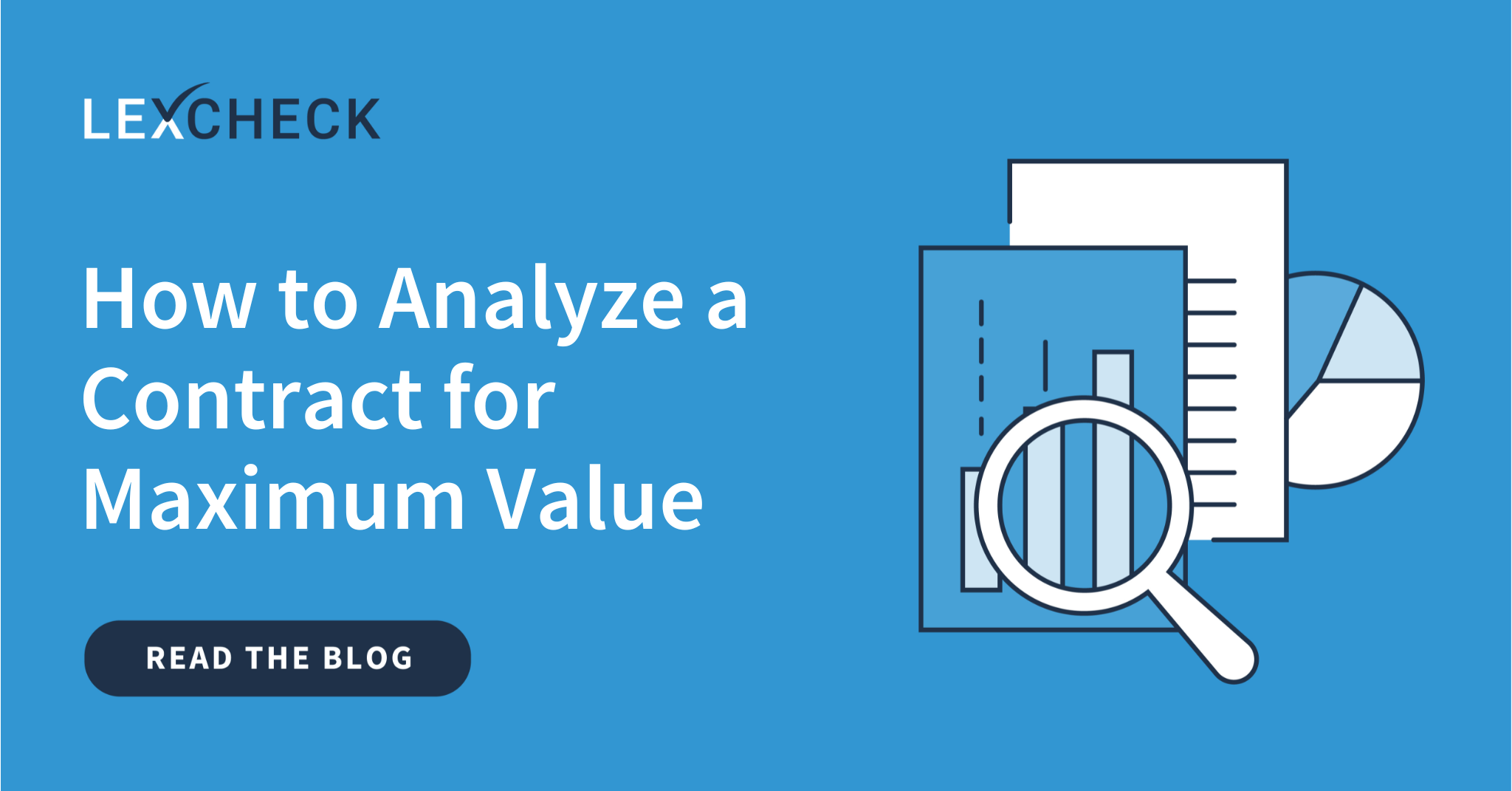Without proper attention during review, negotiation, and pre-execution, contracts tend to leak significant value. That’s according to research conducted by the International Association for Contract & Commercial Management (IACCM) which found that, on average, contract underperformance leads to a 9% annual profit loss—not including the cost of missed opportunities.
Leakage may arise from disagreements over the scope or pricing, inappropriate contract structuring, change management weakness, issues with subcontractors, or performance failures due to overcommitment. These contract review and negotiation issues delayed projects for 77% of those surveyed, led to contract cancellation losses for 26%, and resulted in dispute settlements for 53% of IACCM member companies.
To help you avoid these pitfalls, this article will describe how to analyze a contract properly during the review and negotiation phase for maximum business value.
Redline and Review
Redline review is a crucial step prior to engaging in contract negotiations. Each party takes a hard look at what’s written in black and white to determine whether the text accurately describes the delivery of goods or services, includes all possible contingencies, and represents a mutually agreeable relationship. In the past, much of this work was done using a red pen (hence the term, “redlining”), but today it has shifted online via word processing software.
To derive maximum contract value at this stage, all parties must:
- Track changes to see all additions and strikeouts for clear, open communication.
- Make changes instead of suggesting them. Reviewers should be clear on the specific language they’d like to see in the final draft.
- Insert comments to explain why changes are proposed. Doing so minimizes confusion and back-and-forth attempts to get on the same page.
- Automate expectations with artificial intelligence (AI) technology to automatically review contracts and suggest edits to align with company standards.
Identify Key Language and Positions
A solid contractual position is necessary to guide communication, ensure flexibility, and protect interests. Company standards are most commonly written down in a corporate legal playbook for reference, but must be continually referred to and upheld by the review team. Contract reviewers must know how to identify key language and assess whether it’s in line with company positions.
It’s worth spending extra time assessing:
- Clear, unambiguous language: Language is ambiguous when it is subject to more than one meaning. For instance, if a contract refers to a “dollar” amount, but parties are from the U.S. and Canada, it’s unclear whether the term is referring to the American dollar or the Canadian dollar.
- Scope of work, payment clauses, dates, and deadlines: The epicenter of a contract includes what is to be delivered, when, how, and to what extent. Parties want to ensure they can realistically meet the specified demands.
- Default terms: Parties must know what is to happen should one or more signees breach the terms of the contract. Leniency in default actions can protect a company from severe consequences like losing business, paying penalties, or defending themselves in court.
- Termination and renewal terms: Companies want to ensure they’re not locked into an agreement longer than anticipated. Perusing auto-renewal language and opt-out windows, as well as potential repercussions, will limit risk. Calendar reminders can be set ahead of time to avoid missed opportunities for cancellations or renegotiations.
To strengthen their ability to identify deal-breaking clauses, many companies turn to automated solutions that can color-code specific terms based on risk—prioritizing escalations to senior counsel while identifying common areas for improvement.
Exercise Due Diligence
Proper contract analysis involves a lengthy process of reading and analyzing every single sentence in a multi-page agreement. This critical step can’t be rushed without putting the business at unnecessary risk. Even a single misplaced comma can create a risk.
Typically, multiple people are involved in contract review. Junior-level attorneys take the first pass and forward the draft onto senior counsel. Once the team has finished its assessment, it sends the contract to the other party for a review. When the contract comes back from the other party, a multi-level review is conducted once again.
Due diligence shouldn’t end there. Contract renewal time calls for routine review processes to kick in again so no opportunity to garner more favorable terms is missed. Working with contract management software can help companies stay on top of deadlines and adds another layer of due diligence to the review process.
Automate with Technology
Automation technology has become an integral part of learning how to analyze a contract for maximum value in the modern age. Conducting thorough, line-by-line analysis of a document is a challenge AI is well-equipped to handle by:
- Identifying risk and context: Technology can more quickly identify areas of ambiguous language, key terms, and potential risk without the need of human intervention. It can also extract contextual notes that aid in multi-party negotiations.
- Comparing documents: Manual side-by-side comparisons of legal playbooks and drafts can be agonizingly tedious, often taking weeks to complete. Automation technology is able to identify discrepancies in less than five minutes.
- Rapidly implementing changes: Lawyers can input their own sets of rules to aid in machine learning and system customization. For instance, counsel may tell the software to adjust the minimum number of days needed to give notice of an action whenever it is mentioned in a contract draft. The system can then scan through contracts to auto-correct the language as needed.
Technology isn’t threatening to replace the work of corporate lawyers, but when used in conjunction, can transform contract review into a highly efficient process.
Discover How To Analyze a Contract with LexCheck’s Award-Winning Technology
Knowing how to analyze a contract for maximum value is the easy part. Putting it all into practice with the right tools is the challenge.
LexCheck’s award-winning, value-maximizing technology helps companies unlock the true potential of their contracts with automated corporate legal playbook comparison, redlining, and AI-powered risk analysis.
LexCheck sets businesses up for success by enforcing strategized positions and saving precious amounts of time on review. Invest more into high-level strategy and relationship building by letting LexCheck handle pre-execution contract review and negotiation.

